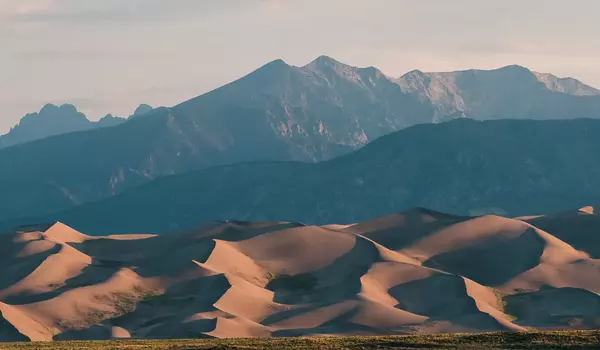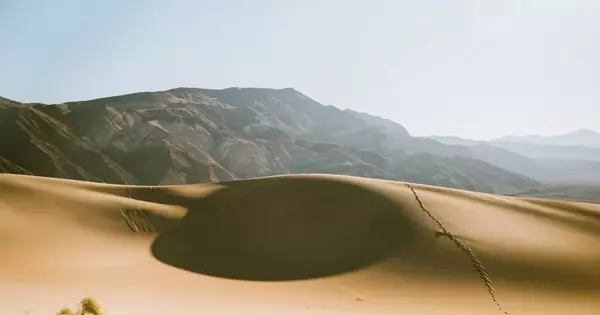The discovery of fire records embedded within sand dunes would be an intriguing archaeological discovery. According to a new study, sand dunes can serve as repositories of fire history and contribute to a better scientific understanding of fire regimes around the world. The discovery could shed light on early human populations’ behaviour and activities.
Knowing how the frequency and intensity of wildfires have changed over time provides scientists with insight into Earth’s past landscapes as well as an understanding of future climate change effects. Researchers rely heavily on sediment records from lake beds to reconstruct fire histories, but this means that fire histories from arid regions are frequently overlooked. Now, a new study shows that sand dunes can serve as repositories of fire history and aid in expanding scientific understanding of fire regimes around the world.
The study, published in Quaternary Research, is the first to look at sedimentary records preserved in sand dunes’ foothill deposits. The study of four sand dunes at the Cooloola Sand Mass in Australia was led by Nicholas Patton, Ph.D., a postdoctoral researcher now at DRI. Australia has one of the world’s most fire-prone landscapes, with a long history of both natural and cultural burning and vast swaths of land devoid of lakes or ponds from which to collect sedimentary records. The scientists wanted to show that these sand dune deposits could be used to reconstruct reliable multi-millennial fire histories. These previously unknown archives could potentially be used to fill knowledge gaps in arid regions around the world where fire shapes the landscape.
We were digging soil pits at the base of the dunes and were seeing a lot of charcoal – more charcoal than we expected. And we thought maybe we could utilize these deposits to reconstruct local fires within the area.
Nicholas Patton
“Many fire and paleoclimate records are located where there’s a lot of water bodies such as lakes, peats, and bogs,” Patton says. “And because of this, most global models really have a bias towards temperate regions.”
The Cooloola Sand Mass is made up of massive sand dunes that grow along the coast and gradually shift inland due to the power of the wind. Patton’s team discovered that the four dunes span the Holocene, representing the last approximately 12,000 years, by determining the age of the dunes using a technique known as optically stimulated luminescence dating, or OSL.
Once a dune is stable, which means it is no longer growing but is slowly degrading, gravity acts on the dune slopes to collect falling sand at the base, as well as the remnants of charcoal from local fires that have deposited on the dune’s surface. Over time, this sediment accumulates, layering charcoal from fire events that can be reliably identified using radiocarbon dating.
“We were digging soil pits at the base of the dunes and were seeing a lot of charcoal – more charcoal than we expected,” says Patton. “And we thought maybe we could utilize these deposits to reconstruct local fires within the area.”

Patton found that on the younger dunes (at 500 years old and 2,000 years old), charcoal layers represented individual fires, because the steep slope of the dunes quickly buried each layer. However, the older dunes (at 5,000 years old and 10,000 years old) had more gradual slopes that blended charcoal from different fires over time, providing a better understanding of periods of increased or decreased fire frequency.
The dunes provided localized fire histories from within a 100-meter radius, so fire records differed slightly between the four dunes, which spanned approximately 2 kilometers. Patton’s team, on the other hand, compared their findings to other fire records from the region discovered in lake and swamp deposits. Their findings, like the regional records, revealed three major periods of fire activity over the last 7,000 years.
Similar records are likely to exist in sand dunes around the world, according to the researchers, and regions such as California and the Southwest United States could benefit from a better understanding of regional fire history. The fire records contain information not only about natural wildfires, but also about how humans influenced fire regimes.
“Fire histories are important for understanding how fire was used in the past for cultural purposes, whether that was clearing fields for agriculture or hunting,” Patton says.
Patton intends to pursue this line of research at other dunes near the Cooloola Sand Mass that are nearly 1 million years old in order to obtain a long-term fire history for the region. Because human communities have existed in Australia for at least 60-70 thousand years, and possibly longer, these records may aid in understanding the relationship between humans and historical fire regimes.
“These kinds of long-term records aren’t always available within lake sediments, but they might be available within these dune deposits,” Patton explains. “That’s pretty exciting.”
















